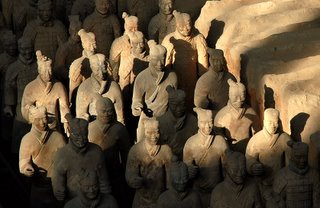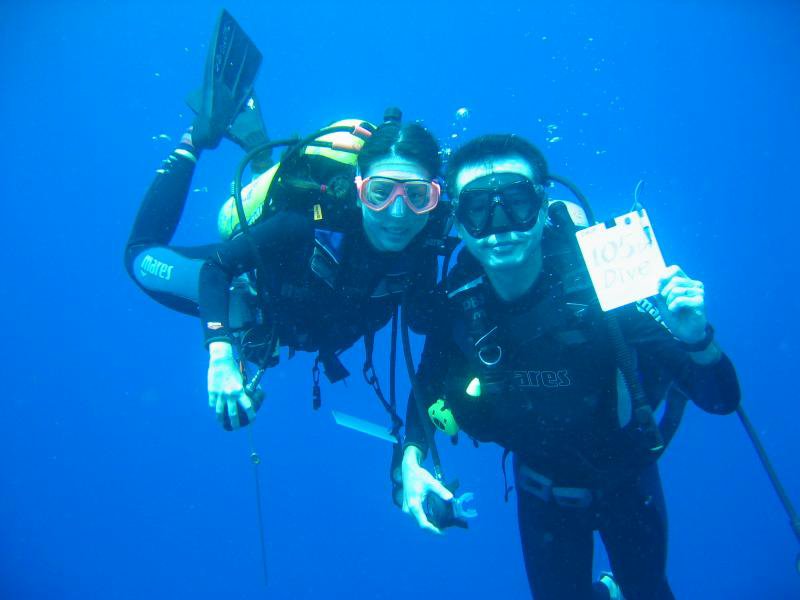

Qin's Terra-cotta Army
“What do you think of it?” my host asked.
In front of us there stood an army of terracotta warriors and their clay horses. It is supposed to number about 1,000 in what is known as Pit 1 (top photo). There are 2 other pits and the total number of soldiers combined is estimated to be about 8,000. Why estimated? Well, because not all the figures have been excavated. From trial pits, it is assumed that there are more than 6,000 warriors that remain to be excavated from Pit 1 alone.
What did I think of them then? Frankly, my mind was elsewhere and I enjoy taking my time to think. I was trying to register them; their scale and artistry, the pretty guide’s lilting English, and the -5 deg C temperature of Xi'an on that morning of 18 Dec. I was trying to make some sense of the Qin era, comparing them with the other world power at the time, which was the ascendant Rome. The Egyptians were well on their way to obscurity, important only for their granaries. The age of Bronze was just over, and the age of Iron has begun. The Romans and the Greeks before them cremate their heroes, didn’t they? But the guy who gave his name to the Mausoleum; King Mausollos of Caria, he had himself a pretty impressive tomb, didn't he, and that was around 350BC, about 150 years before the Qin tomb…


That mausoleum was built in Western Turkey, under the influence of Greece and Persia at the time, in a town they called Halicarnassus (left). The materials were hardy; they worked with alabaster, marble, and stone. And then there was Hadrian’s Mausoleum in Rome (today’s Castel Sant’Angelo), a much grander one than Augustus’ Mausoleum (top right). This was the 2nd Cent AD, and the form of Hadrian's Mausoleum is still pretty much intact today. And of a millenium older are the pyramids of Egypt, from Saqqara to Giza. They too had been built with weighty marble and stones...
It would take me a while to think about the figures of Xi'an, and to put everything into some sort of perspective. Compared with the stone counterparts, the earthy potteries of the terracotta warriors are a shade more, dare I say, humble. I don't think my earnest host would be pleased to know what I was really thinking about, actually. He would've thought me a hard-to-please snob. It would've been impolite not to have been impressed.
But I don't want to appreciate the terracotta warriors in ignorance of all its world. It's only after I give them some kind of context can I then zoom in to study them, and hopefully to love them. And since returning from China, I've been reading up on them, sketching them and catching the odd movie or two that features them. Slowly, indelibly, they've been etched in my memory. I've managed to finish Chen Kaige's "The Emperor and the Assassin" (1999) last week (It was excellent!). I hope to catch "The Terracotta Warrior" (1989) and "The Great Conqueror's Concubine" (1994) again soon, if I can find the DVDs... And I'm scheduled to give a lecture on Chinese Architecture to my class in 2 weeks' time, according to the syllabus planned months ago. So I'm just warming up to the subject.
Chup


1 Comments:
Ah, you see, you're like Lini, always smelling things! Well, if there had been a smell in Xian, it was the smell of charcoal, the burning of fossil fuel. It still is a polluted place, but they say it's already much better now than before.
Post a Comment
<< Home